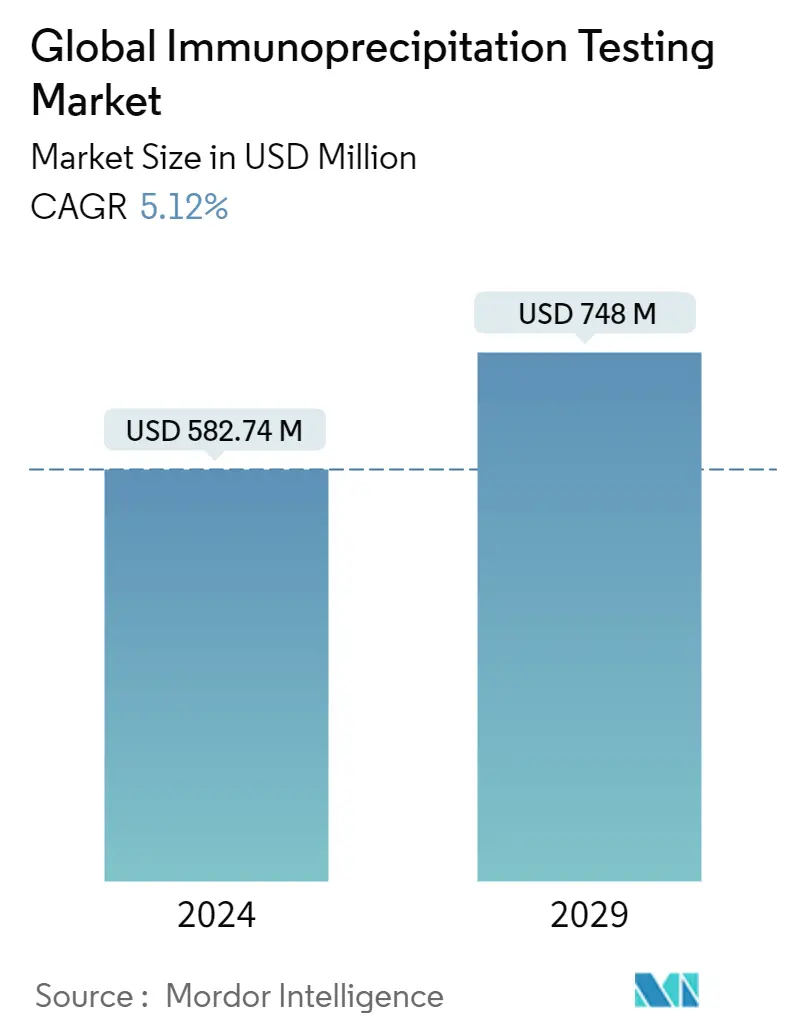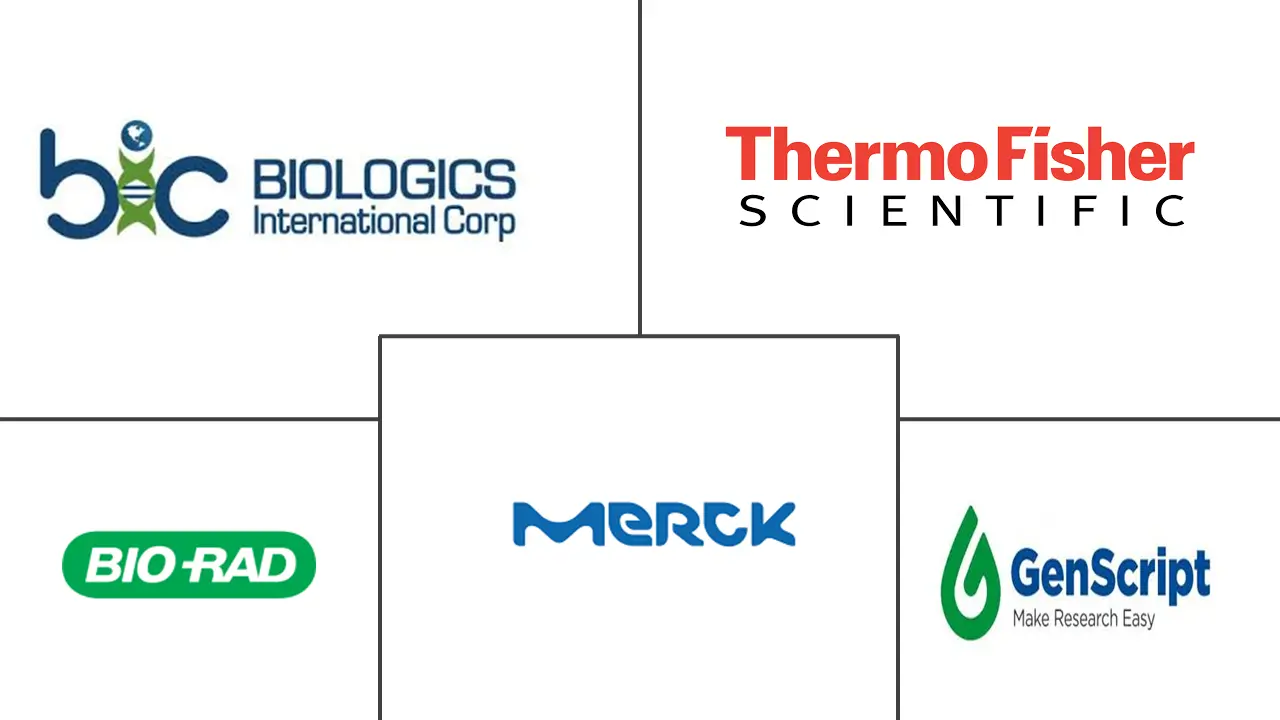Market Size of Global Immunoprecipitation Testing Industry

| Study Period | 2019 - 2029 |
| Market Size (2024) | USD 582.74 Million |
| Market Size (2029) | USD 748.00 Million |
| CAGR (2024 - 2029) | 5.12 % |
| Fastest Growing Market | Asia Pacific |
| Largest Market | North America |
Major Players
*Disclaimer: Major Players sorted in no particular order |
Need a report that reflects how COVID-19 has impacted this market and its growth?
Immunoprecipitation Testing Market Analysis
The Global Immunoprecipitation Testing Market size is estimated at USD 582.74 million in 2024, and is expected to reach USD 748 million by 2029, growing at a CAGR of 5.12% during the forecast period (2024-2029).
The COVID-19 pandemic is expected to have a significant impact on the growth of the studied market. The coronavirus enters the cell when viral spike protein binds to the ACE2 protein present on the surface of human cells. Immunity among the COVID-19 recovered patients is predicted to develop due to the presence of neutralizing antibodies that block this binding. Hence, researchers study the protein interactions and action of neutralizing antibodies. For instance, as per the research study published in Science Daily in December 2020, titled 'Plasma From Recovered COVID-19 Patients Inhibits Spike Protein Binding to ACE2 in a Microsphere-Based Inhibition Assay', researchers applied immunoprecipitation associated with flow cytometry (IP-FCM) in studying the interactions of proteins in SARS-CoV2 infection and the role of antibodies in blocking the virus from binding to cells. Thus, given the ongoing pandemic and increasing research activities, the studied market is expected to be significantly impacted by the current crisis.
The immunoprecipitation testing market is increasing due to the prevalence of autoimmune disorders, which require antibody-antigen interaction testing. Additionally, the growing opportunities in funding and investments from the government and non-government organizations toward the research on next-generation DNA sequencing and genomics are fueling the market growth. In February 2021, the National Institute of Allergy and Infectious Diseases (NIAID) initiated a Phase 1 clinical study to evaluate the safety and immunogenicity of an Epstein-Barr Virus (EBV) gp350-Ferritin Nanoparticle Vaccine, in which the secondary immunogenicity endpoints are measured using luciferase immunoprecipitation assay.
The growing applications of immunoprecipitation testing in central nervous disorders, cancers, and cardiovascular diseases are also boosting the growth of the immunoprecipitation testing market. The tumor cells resistant to drugs exhibit dynamic protein-protein interactions; immunoprecipitation testing aids in studying these interactions among cancer patients. According to the Globocan 2020 fact sheet, an estimated 19,292,789 new cancer cases were diagnosed worldwide, with nearly 9,958,133 deaths from cancer globally. According to estimates from the International Agency for Research on Cancer (IARC), by 2040, the global burden of cancers is expected to grow to 27.5 million new cancer cases and 16.3 million deaths worldwide. Thus, the growing burden of cancers is also expected to drive market growth.
Additionally, in May 2019, Merck & Co. Inc. established a new life science facility that is majorly aimed at research and development activities related to oncology, immunology, and immuno-oncology.
However, limitations in sample size and variations in lipid content might hamper the wide application of this test, which is expected to impede the market growth.
